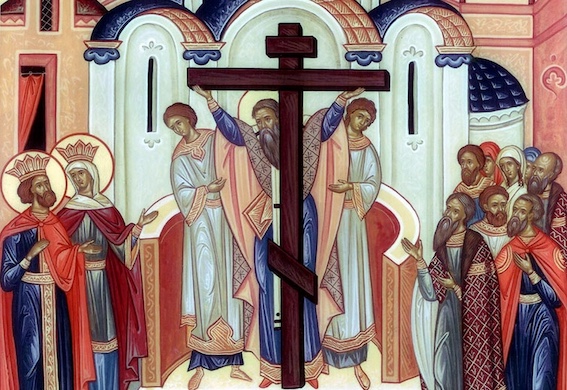In Carmel, the feast of the Exaltation of the Holy Cross opens the way that leads us to the Lord’s Passover, and we do so by renewing our vows of poverty, obedience, and chastity. This is our offering to the Lord for the Church and for the world.
Thus we begin the season of love and sharing, according to the invitation of our Rule of Life: “You shall fast every day, except Sundays, from the feast of the Exaltation of the Holy Cross until the day of the Lord’s Resurrection, unless illness or weakness of the body, or some other just cause, requires you to break the fast, for necessity knows no law” (n. 14).
We do this 40 days after celebrating the feast of the Transfiguration, in this way the liturgy sets the tone for our journey: we walk in the light that Moses and Elijah contemplated on the mountain, we walk in the hope that comes from the triumph of the Lord, because the Cross remains a source of consolation, forgiveness, and victory.
Meditation for the Feast of the Holy Cross in the light of the Rule of Carmel
The Cross stands at the heart of our faith as a sign of life and victory. In contemplating it, we discover the love of Christ given to the end, and we hear his call to enter into the mystery of his obedience and his gift.
The Rule of Carmel invites us to “live in obedience to Jesus Christ” (ch. 2). The Cross is the supreme place where this obedience is fulfilled: “He became obedient unto death, even death on a cross” (Phil 2:8). To celebrate the feast of the Holy Cross is to renew our choice to let Christ guide our lives, even in small renunciations and great trials.
In the Rule, we also receive the call to “meditate day and night on the law of the Lord and watch in prayer” (ch. 10). The Cross is the open book in which the Word of God is written in letters of blood and mercy. Every time we lift our eyes to the Crucified One, we read again this law of love: “There is no greater love than to lay down one’s life for one’s friends” (Jn 15:13).
Carmel also teaches us to “remain in our cell, meditating day and night on the word of the Lord” (ch. 8). The cell becomes the place of our encounter with the Cross: solitude, simplicity, sometimes darkness. But in this poverty we discover that the Crucified One is not far away: he is our companion in silence and our strength in weakness.
Finally, on this day, let us turn our gaze to the Holy Cross as the tree of life, the door to the Resurrection, the sign of the greatest love. May it light our paths, sustain our fidelity, inflame our prayer, and enable us to follow Jesus every day, “in fidelity to work and perseverance in prayer” (cf. Rule of Carmel, ch. 7).

